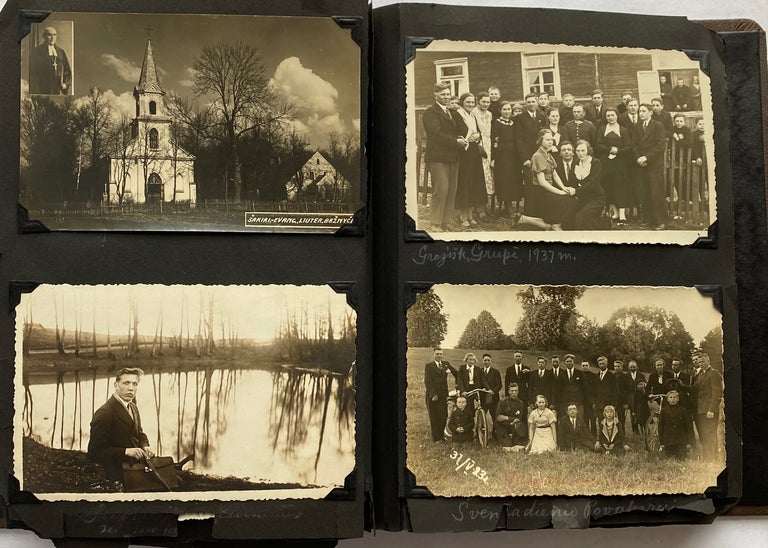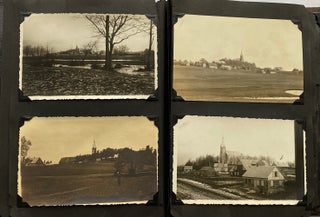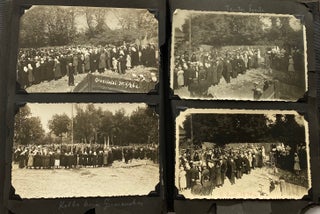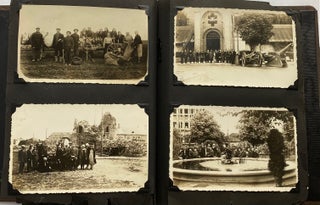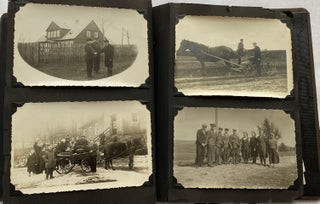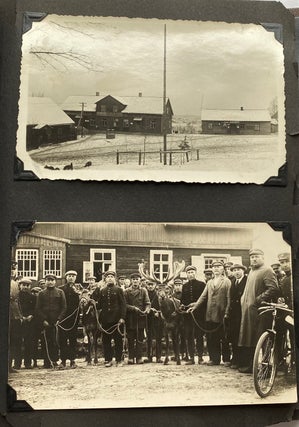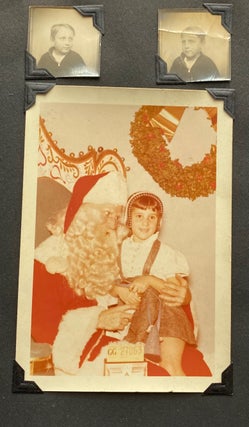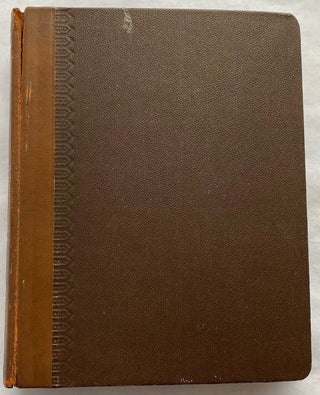1930s Photo Album Of Village Life In Lithuania (With An American Coda)
Item #666
This small (7 ¼” x 9 ¼”) album, with a light-brown spine embossed with gold figures, and darker brown covers, contains 47 photos of village life in and around the small village of Gražiškiai, in southwest Lithuania. The photos date from 1934 to 1937. A second set of 22 photos follows those from Lithuania. These appear to be taken in America, perhaps in or near Philadelphia, and show mostly a young girl, photographed in outdoor settings. There are two photobooths included in this group of a young boy, who may also be the boy who sits on the lap of Santa Claus in a Christmas card inscribed (probably by the boy’s mother) “To Grandma With Love, Paul.” This card is unmounted, loose in the album, as is a small group of ephemera—newspaper clippings
The Lithuanian photos are all the same size: 5 ⅜” x 3 ½”, postcard size. Three of the photos are indeed real photo postcards. The other photos, though postcard size, are not rppcs; many have white borders and serrated edges, while the real photo postcards have smooth edges. The photos are attached with photo corners to black construction paper, the edges of which are broken and crumbling in places.
The subjects of the photos vary within a fairly narrow range: scenes of village life, landscapes featuring the village in the middle distance, outdoor groupings engaged in various activities. In two rather curious images, a priest appears in the foreground, sitting on the ground in his cassock, seeming to be writing something in some ledger, while behind him sit and stand a large group of villagers, many armed with spades and shovels. Perhaps the captions on the back of the photos, which can be removed carefully from their places and returned, explain these gatherings. There are also photos of a more domestic nature, lovers posing in a backyard enclosure, men building a dry stone wall, the same men, perhaps, or others, building a house. In one photo a group of men pose with two reindeer. The male reindeer appears as interested in having his photo taken as any of the men.
One wonders how the village of Gražiškiai, which in 2011 had a population of 349, according to Wikipedia, fared in World War II, when Lithuania was occupied first by the Soviets, then for three years by the Nazis, and then again, in 1944, by the Soviets. How did a son or daughter get to America, where the photos of the small girl appear to have been taken? And the newspaper and magazine clippings, a small group of which show up loose at the end of the album, how did they come to be there? Most of the clippings feature poems by Joseph Auslander, from the war era. Another poem, by a “Pvt. Joseph Banta,” addresses the futility of war. And then there is the sheet of unused tissue paper, not so carefully folded. Why is that there, one wonders?
In the pages of the album, life is lived peacefully, then, off camera, disrupted, then lived peacefully again. And so the cycle continues.
Price: $195.00

